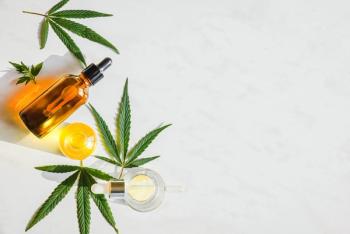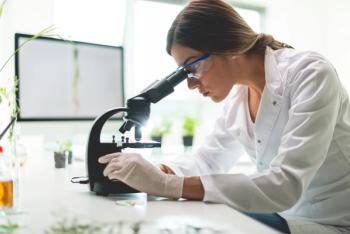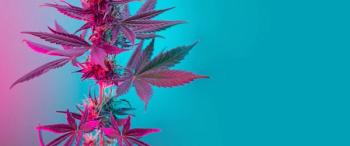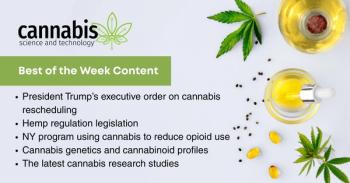
Cannabis Science and Technology
- January/February 2021
- Volume 4
- Issue 1
Cannabis Water Report Highlights Opportunities for Water Efficiency

Learn the ways cannabis cultivation uses water as a resource, how to measure and benchmark the key performance indicators (KPIs) for water efficiency and productivity, and the benefits of monitoring, quantifying, and ranking KPIs for water.
Learn the ways cannabis cultivation uses water as a resource, how to measure and benchmark the key performance indicators (KPIs) for water efficiency and productivity, and the benefits of monitoring, quantifying, and ranking KPIs for water.
Growing cannabis and hemp can involve sourcing, treating, storing, fertigating, recapturing, and draining water throughout a cultivation facility to optimize plant growth. Infrastructure for water management varies by operator and approach, as well as region and local regulations. In February 2021, the Cannabis Water Report will be published by New Frontier Data after a one-year partnership between Resource Innovation Institute (RII), New Frontier, and the Berkeley Cannabis Research Center. In this column, we review how to maximize water productivity and water efficiency and manage monthly and annual water demand to minimize the environmental impacts of cannabis industry water consumption.
How Cultivation Operations Can Use and Reuse Water
Water is a critical resource for cannabis cultivation operations no matter the cultivation method; whether grown outdoors, in a greenhouse, or in a warehouse, cannabis requires water throughout all stages of plant growth for various applications. Some of these uses include irrigation for cultivation, water for heating and cooling processes such as hydronic heating systems and wet wall cooling systems (1), fogging for humidification processes, fogging for application of pest management solutions, and water used for cleaning activities.
Figure 1 shows a simplified schematic of a water system serving an indoor cannabis cultivation facility, and demonstrates the interconnection between water source, water storage infrastructure, and various water management systems such as treatment and fertigation (image courtesy of Silver Bullet Water Treatment [2]). The graphic’s dotted lines illustrate cultivation facilities’ opportunities for recapture and reuse. Irrigation water drains out of plants; runoff can be collected and treated to be reused for watering plants. HVAC system condensate can also be collected and treated for reuse.
Quantifying Irrigation Water Use of Cannabis Production Facilities
To understand how much water is used to grow cannabis and manufacture products from harvested biomass, it is necessary to distinguish the variety of water infrastructure used to manage water processes and clarify which water use is being quantified.
Annual water usage varies by cultivation method, and other factors can influence usage and storage rates, such as farm location, applicable water regulations, and facility-level choices like HVAC system type, pest management approach, and cleaning protocols. For instance, farms in regulated regions may incorporate water storage infrastructure or employ water conservation strategies such as recapture and reuse to comply with local requirements, but operations sourcing water from municipal networks may not store water on-site, or might be more motivated to improve water efficiency to conserve costs or increase competitiveness.
The Cannabis Water Report is a partnership between RII (3), New Frontier Data, Berkeley Cannabis Research Center, and the 17 other members of RII's Technical Advisory Council Water Working Group. The report will establish a scientific understanding of how, and how much, water is used for cannabis cultivation (4). Highlights from the report were previewed at MJBizCon in December 2020, and the full Cannabis Water Report is scheduled to be published in February 2021. The report analyzes data from RII’s Cannabis PowerScore (5) resource benchmarking platform representing water practices of outdoor farms, greenhouses, and indoor operations in 10 states in the US including California, Colorado, Massachusetts, Oregon, Washington, and Michigan.
The analysis in the Cannabis Water Report focuses on facility-level water applied to plants for cultivation, and estimates of total cannabis industry water consumption are based on benchmarks calculated by RII for water sourced and stored for irrigation processes. Future research will investigate the water used for noncultivation processes so the complete story of resource consumption for cannabis production can be told.
Benchmarking Water Management
Cannabis operations are challenging to benchmark (6), but specialized tools like PowerScore can measure key performance indicators (KPIs) for productivity and resource efficiency. By monitoring, quantifying, and ranking KPIs for water and other resources like energy and waste, cannabis businesses can become more productive and competitive in changing markets.
Early efforts over the past decade to quantify water efficiency of cannabis production facilities used unit metrics such as gallons per plant as a baseline for typical performance (7). However, planting densities, plant size, and duration of the cultivation period range so widely that variation renders any "per plant" comparison meaningless.
The Cannabis Water Report uses several key benchmarks to assess water efficiency and productivity of cannabis production facilities: water productivity, water efficiency, and water demand.
- Water productivity can be measured in grams of dry cannabis flower per gallon of water applied. Water productivity describes how much biomass can be produced for each unit of irrigation water, and is a specialized KPI that relates cannabis production to water usage.
- Water efficiency can be measured in gallons of water applied per square foot of flowering canopy. Water efficiency calculates how much water is used per unit of flowering canopy, and is also a unique metric for measuring how well water is conserved when producing cannabis.
- Water demand can be measured in gallons of water applied per year or month. Water demand calculates how much water is used at the facility level, and is a KPI of interest to regulators seeking to minimize the environmental impacts of cannabis production.
Preview of Cannabis Water Report Recommendations
Based on the analysis of the three major benchmarks of water productivity, efficiency, and demand, the Cannabis Water Report suggests that regulations evaluating water efficiency should be based on canopy square footage, not plant count. The water productivity metric offers a more accurate benchmark for water performance than water demand (gallons per plant), and policymakers crafting legislation should consider using productivity instead of rules based on plant count. However, water productivity can be harder for producers to accurately measure and standardized calculation methodologies need to be developed for the various products of cannabis beyond dry flower.
Water consumption in legal cannabis markets is projected to nearly double in the next five years (8), but the data shows legal cultivation of the plant is not as water-intensive as previously thought. Whereas old data and press narratives based on the illicit market represented cannabis as an extremely "thirsty" crop, the regulated, legalized cannabis industry analyzed on an aggregate basis uses significantly less water than other major agricultural crops in California including cotton, tomatoes, wheat, and corn.
The Cannabis Water Report will provide cultivators with insights, clarity, and strategic recommendations for water efficiency and productivity, and ensure industry actors are accurately informed about the range of water practices in today’s dynamic and highly regulated cannabis market. Stay tuned for the Cannabis Water Report in February; New Frontier Data will release the report for free on their website (9).
Maximizing Water Productivity and Efficiency
Among other recommendations, the report will offer strategic recommendations for optimizing business value and minimizing the environmental impacts of cannabis industry water consumption:
- Maximize water productivity by benchmarking and tracking performance to evaluate strategies
- Increase water efficiency by planning how source water will be used and how facility process water will be captured and reused for cultivation
- Manage monthly and annual water demand by thoughtfully designing and deploying storage infrastructure
The Cannabis Water Report will summarize total industry water consumption, include case studies from several cannabis producers using varying cultivation approaches and techniques, and analyze water sources and grow media, and rates of water storage by facility type.
To learn more about best practices for water management, watch "Insights from Cultivation Water Use Data: Measuring What Matters and Strategies for Increasing Profits" (10), a webinar facilitated by Cannabis Science and Technology featuring a panel moderated by Resource Innovation Institute. Hear from House of Cultivar, Grodan, and the Berkeley Cannabis Research Center on the impacts cultivation approach, soil media, and water use management practices have on overall water consumption and environmental impact of cultivation.
References
https://www.cannabissciencetech.com/view/hvacd-controls-for-plant-health-product-quality-and-energy-efficiency-in-cultivation-and-drying-processes .- Silver Bullet Water Treatment,
www.SilverBulletCorp.com . https://resourceinnovation.org/ .https://resourceinnovation.org/press-release/resource-innovation-institute-previews-new-findings-in-2021-cannabis-water-report-at-mjbizcon-associations-day/ .https://cannabispowerscore.org/ .https://www.cannabissciencetech.com/view/resource-benchmarking-for-competitive-and-efficient-cannabis-cultivation-and-production-processes .https://nrm.dfg.ca.gov/FileHandler.ashx?DocumentID=160552&inline .https://www.youtube.com/watch?v=jCJ-83Iyb8Q .https://newfrontierdata.com/ .https://www.cannabissciencetech.com/view/insights-from-cultivation-water-use-data-measuring-what-matters-and-strategies-for-increasing-profits-and-minimizing-environmental-impact .
About the Columnist
Gretchen Schimelpfenig, PE, is the Technical Director of RII and manages the organization’s Technical Advisory Council. She is an LED-lit home cultivator. While serving Burlington Electric Department customers, she incentivized horticultural LED lighting equipment through energy efficiency programs, and has commissioned LED lighting designs and installed systems in commercial and industrial buildings, including greenhouses used for academic research on hemp and other cultivars. She authored the RII Best Practices Guides on HVAC and LED Lighting for Cannabis Cultivation and Controlled Environment Agriculture. She has a B.S. in Architectural Engineering from the University of Wyoming and an M.S. in Civil Engineering from Stanford University. She is a licensed Civil Professional Engineer in California and Vermont.
How to Cite this Article
G. Schimelpfenig, Cannabis Science and Technology 4(1), 16-18 (2021).
Articles in this issue
almost 5 years ago
Turning the Page to a New Yearalmost 5 years ago
Connecting Cannabis with the Evolving Needs of the Consumeralmost 5 years ago
Lighting: Setting the Stage for Genetic Potential in Cannabis and Hempabout 5 years ago
A Market Overview: CBD TopicalsNewsletter
Unlock the latest breakthroughs in cannabis science—subscribe now to get expert insights, research, and industry updates delivered to your inbox.




